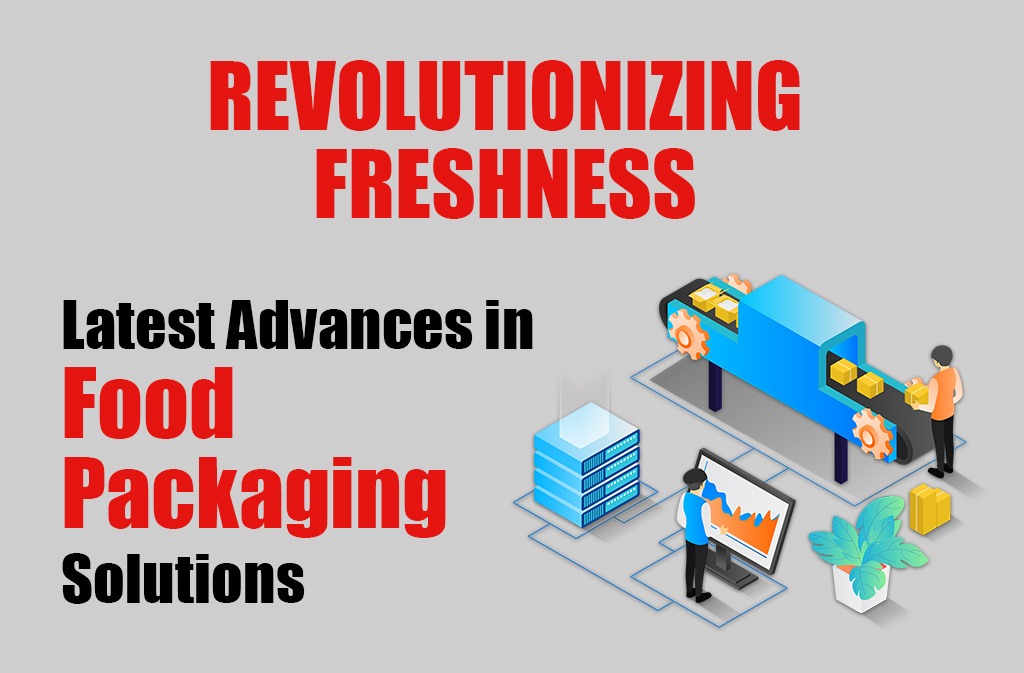 Food packaging plays a crucial role in the food supply chain, impacting everything from shelf life to safety. Recent advancements are revolutionizing how we preserve and present food. Here’s a look at some cutting-edge solutions enhancing freshness, sustainability, and convenience.
Food packaging plays a crucial role in the food supply chain, impacting everything from shelf life to safety. Recent advancements are revolutionizing how we preserve and present food. Here’s a look at some cutting-edge solutions enhancing freshness, sustainability, and convenience.
1. Smart Packaging
What It Is: Smart packaging integrates technology into the packaging to provide real-time information about the product’s condition. This includes sensors, QR codes, and electronic indicators.
Key Features:
- Freshness Indicators: Sensors change color or display messages when the product nears its expiration date or is exposed to unfavorable conditions.
- Temperature Monitors: Sensors track temperatures to prevent spoilage during transport and storage.
Why It Matters: Smart packaging reduces food waste by offering accurate freshness and safety information, improving overall quality control.
2. Active Packaging
What It Is: Active packaging interacts with the food to extend its shelf life by absorbing moisture, releasing preservatives, or controlling the package atmosphere.
Key Features:
- Oxygen Scavengers: Absorb oxygen to slow spoilage and inhibit bacterial growth.
- Moisture Absorbers: Control moisture to prevent mold and extend freshness.
Why It Matters: Enhances food preservation and safety while reducing the need for chemical preservatives.
3. Biodegradable and Compostable Packaging
What It Is: Made from renewable resources like plant fibers and seaweed, these materials degrade naturally, minimizing environmental impact.
Key Features:
- Compostable Materials: Can be composted with food waste, returning nutrients to the soil.
- Biodegradable Plastics: Break down into natural elements under environmental conditions.
Why It Matters: Provides sustainable alternatives to traditional plastics, reducing the ecological footprint of packaging.
4. Edible Packaging
What It Is: Packaging made from food-grade materials that can be consumed along with the product, such as seaweed or rice-based wrappers.
Key Features:
- Dual Function: Reduces waste by making the package edible.
- Customization: Can be flavored or colored to complement the food product.
Why It Matters: Offers an innovative way to reduce waste and integrates packaging with the food, appealing to environmentally conscious consumers.
5. Nanotechnology in Packaging
What It Is: Utilizes nanomaterials to enhance packaging performance, improving barrier properties and durability.
Key Features:
- Improved Barrier Properties: Offers better protection against gases, moisture, and light.
- Enhanced Durability: Increases resistance to physical damage.
Why It Matters: Enhances food preservation and safety by extending shelf life and reducing spoilage.
6. Sustainable Materials
What It Is: Innovations in sustainable materials focus on reducing environmental impact by using renewable and recycled resources.
Key Features:
- Plant-Based Plastics: Derived from plants like corn or sugarcane.
- Recycled Materials: Made from post-consumer recycled content.
Why It Matters: Meets growing consumer demand for eco-friendly products and minimizes the environmental footprint of packaging.
7. Innovative Design and Function
What It Is: Improvements in design focus on making packaging more user-friendly and efficient.
Key Features:
- Resealable Packaging: Helps preserve freshness after opening.
- Portion Control: Facilitates accurate portioning to reduce waste.
Why It Matters: Enhances convenience and usability, aiding in the efficient storage and management of food products.
These advancements in food packaging reflect a shift towards smarter, more sustainable, and user-friendly solutions, driving the future of food preservation and consumer experience.


